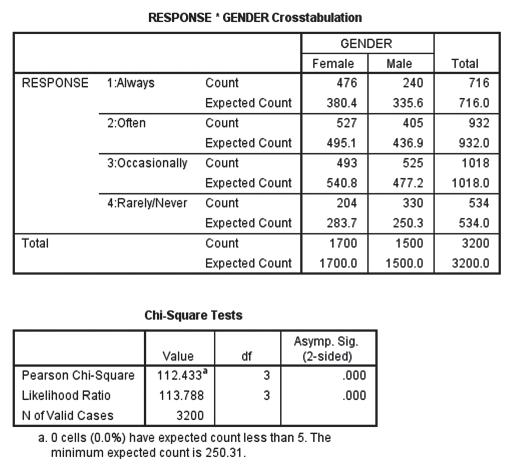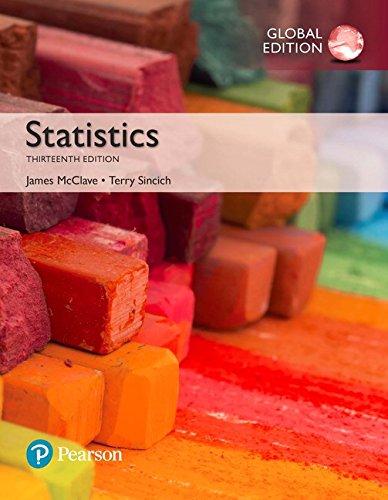Purchasing souvenirs. A major tourist activity is shopping. Travel researchers estimate that nearly one-third of total travel
Question:
Purchasing souvenirs. A major tourist activity is shopping.
Travel researchers estimate that nearly one-third of total travel expenditures are used on shopping for souvenirs
(Journal of Travel Research, May 2011). To investigate the impact of gender on souvenir shopping, a survey of 3,200 tourists was conducted. One question asked how often the tourist purchases photographs, postcards, or paintings of the region visited. Responses were recorded as “always,”
“often,” “occasionally,” or “rarely or never.” The table shows the percentages of tourists responding in each category by gender.
Photos, Postcards, Paintings Male Tourist Female Tourist Always 16% 28%
Often 27 31 Occasionally 35 29 Rarely or Never 22 12 Totals 100% 100%
Source: Wilkins, H. “Souvenirs: What and why we buy.” Journal of Travel Research, Vol. 50, No. 3, May 2011 (adapted from Table 2).
a. Based on the percentages shown in the table, do you think male and female tourists differ in their responses to purchasing photographs, postcards, or paintings?
Why are these percentages alone insufficient to draw a conclusion about the true response category proportions?
b. Assume that 1,500 males and 1,700 females participated in the survey. Use these sample sizes and the percentages in the table to compute the counts of tourists in each of the Response/Gender categories. This represents the contingency table for the study.
c. Specify the null and alternative hypotheses for testing whether male and female tourists differ in their responses to purchasing photographs, postcards, or paintings.
d. An SPSS printout of the contingency table analyses is shown below. Locate the test statistic and p-value on the printout.
e. Make the appropriate conclusion using a = .01.

Step by Step Answer:






